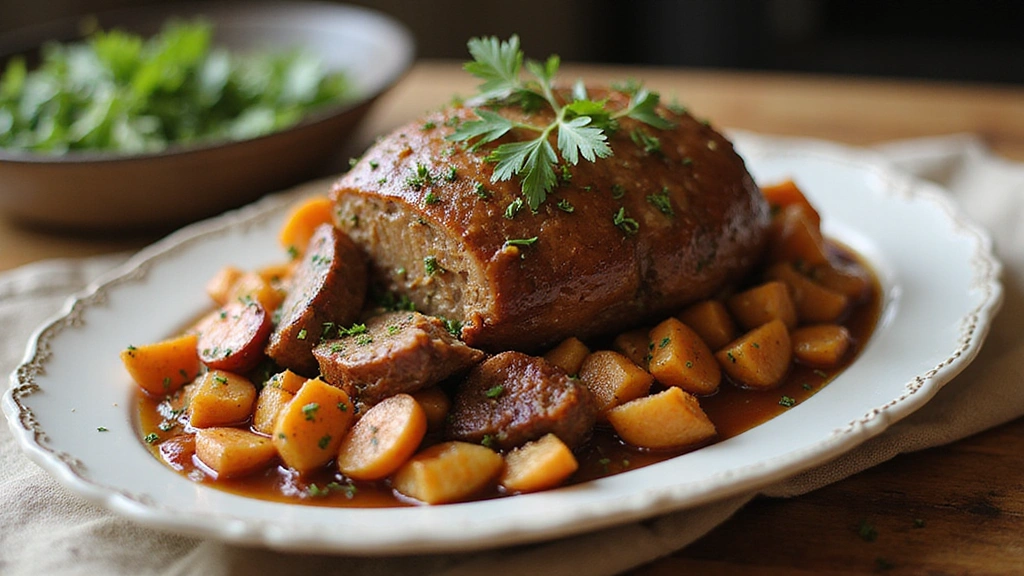Pot Roast Crock Pot Recipes with Coffee Rich and Flavorful is a delightful twist on a classic dish that brings warmth and comfort to any table.
The deep, rich flavors of coffee meld perfectly with tender cuts of meat, creating a savory experience that is both hearty and satisfying.
I first encountered this unique recipe during a cozy dinner with friends, where the aroma alone was enough to make anyone’s mouth water.
Perfect for family gatherings or a relaxing Sunday meal, this pot roast promises to impress your taste buds with minimal effort in the kitchen.
The History and Cultural Significance
• Pot Roast Crock Pot Recipes with Coffee Rich and Flavorful traces its origins to the early 20th century in American homes, where slow-cooking methods became popular for tenderizing tougher cuts of meat.
• The dish evolved over decades as coffee became a staple in American households, eventually finding its way into savory recipes, adding depth and complexity.
• In many American families, pot roast is a Sunday dinner tradition, symbolizing togetherness and comfort.
• While many variations exist across different regions, the authentic version maintains a rich, coffee-infused broth that sets it apart from imitations.
Recipe Overview
Nutritional Information (per serving)
Ingredients
Essential Equipment Guide
Crock Pot: This slow cooker is essential for achieving the tender, melt-in-your-mouth texture that a pot roast is known for. Look for one with a programmable timer to ensure perfect cooking times.
Meat Thermometer: A meat thermometer helps you monitor the internal temperature of the roast, ensuring it reaches the ideal doneness without overcooking. Digital models with instant-read capabilities are recommended for accuracy.
Large Skillet: A large skillet is crucial for searing the meat before slow cooking. Choose one with a heavy bottom for even heat distribution and a non-stick surface for easier cleanup.
Preparation Methods
Searing: Searing the meat before slow cooking locks in moisture and adds a depth of flavor through caramelization. Ensure your skillet is hot enough so that the meat sizzles upon contact, creating a nice brown crust.
Deglazing: After searing, deglazing the pan with coffee or broth helps lift the browned bits stuck to the bottom. This step is crucial for building flavor in the sauce, so scrape the pan well to incorporate all those tasty morsels.
Layering: Layering the ingredients in the slow cooker is key to even cooking. Start with root vegetables on the bottom, followed by the seared meat, and pour the liquid ingredients on top to ensure even distribution.
Step 1: Prepare Ingredients
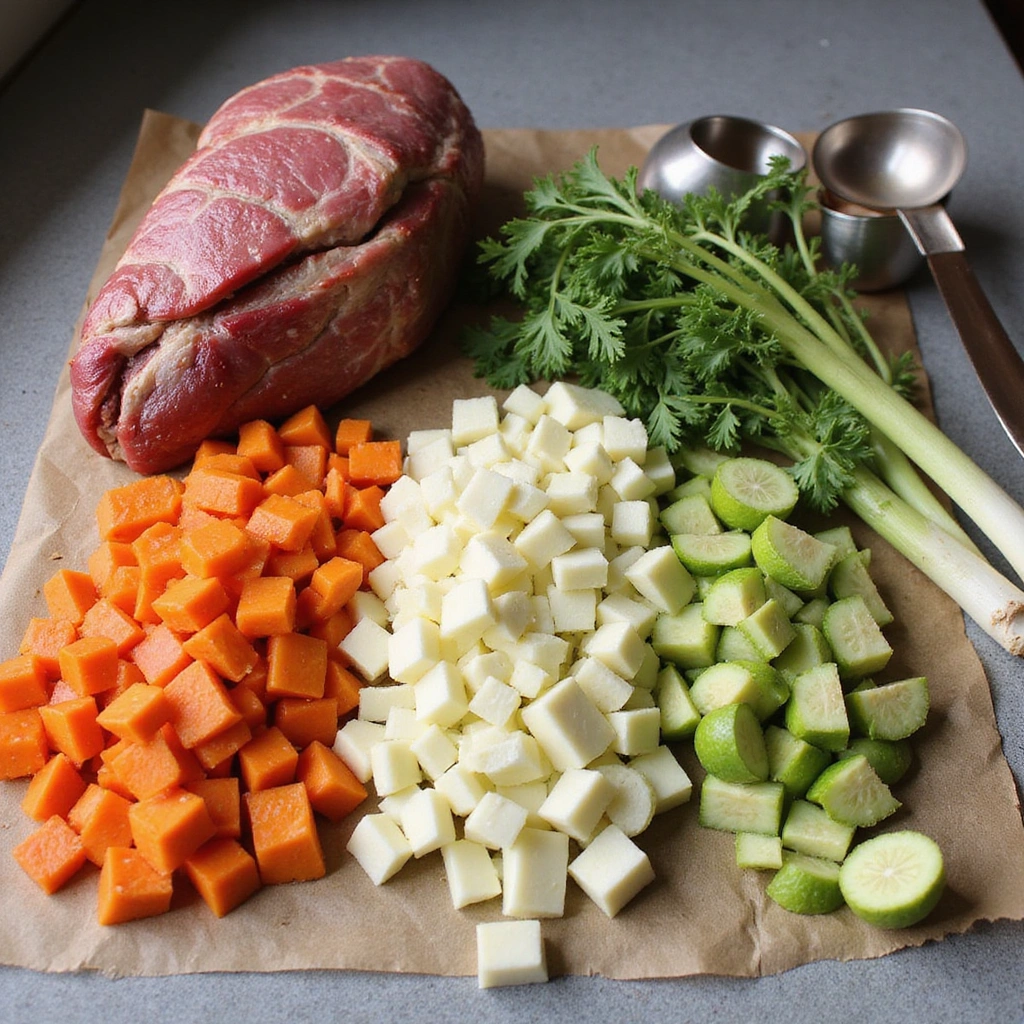
Start by gathering all the ingredients needed for the recipe.
Wash and chop the vegetables into the desired sizes.
Ensure the meat is thawed if previously frozen for even cooking.
Having everything prepped makes the cooking process smoother.
Step 2: Sear the Meat
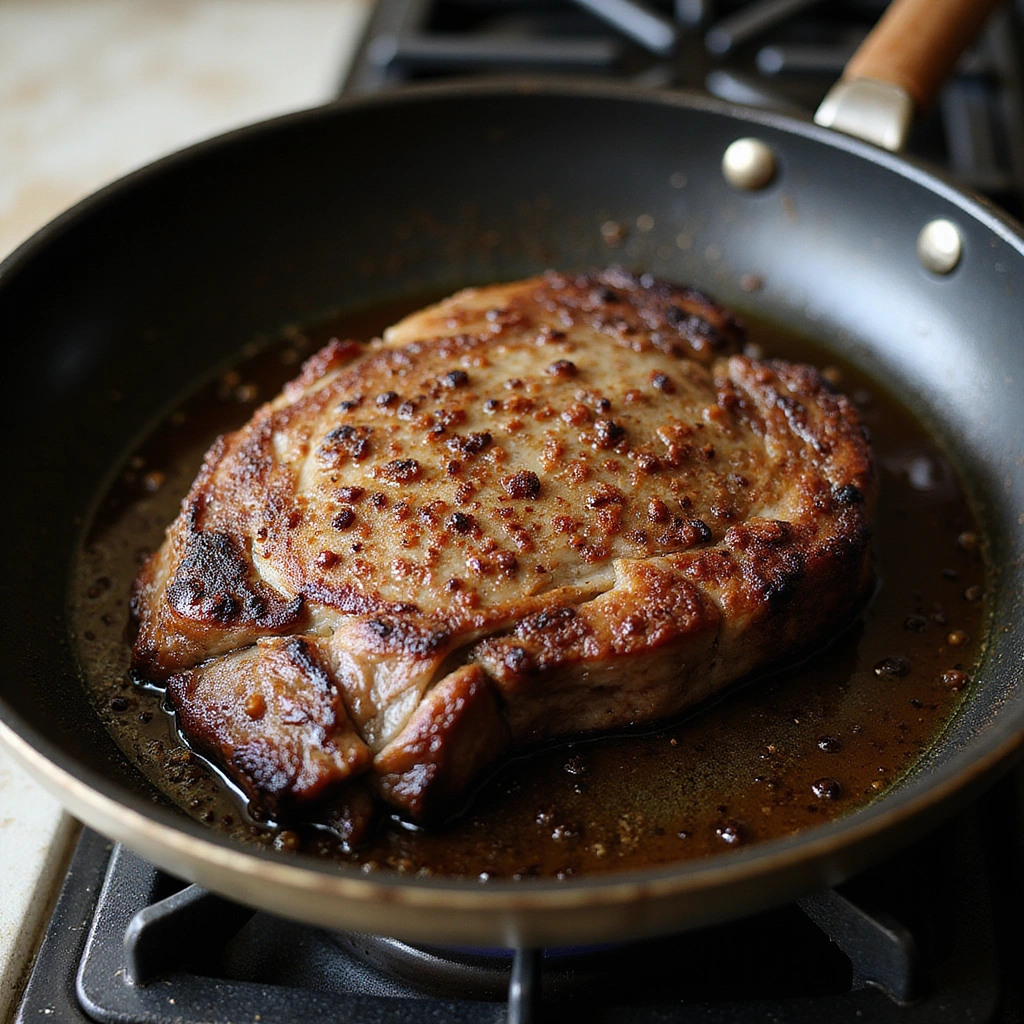
Heat the olive oil in a large skillet over medium-high heat.
Once hot, add the chuck roast and sear for 4-5 minutes on each side until a golden-brown crust forms.
This step locks in juices and enhances flavor.
Transfer the seared meat to the crock pot carefully.
Step 3: Deglaze the Skillet
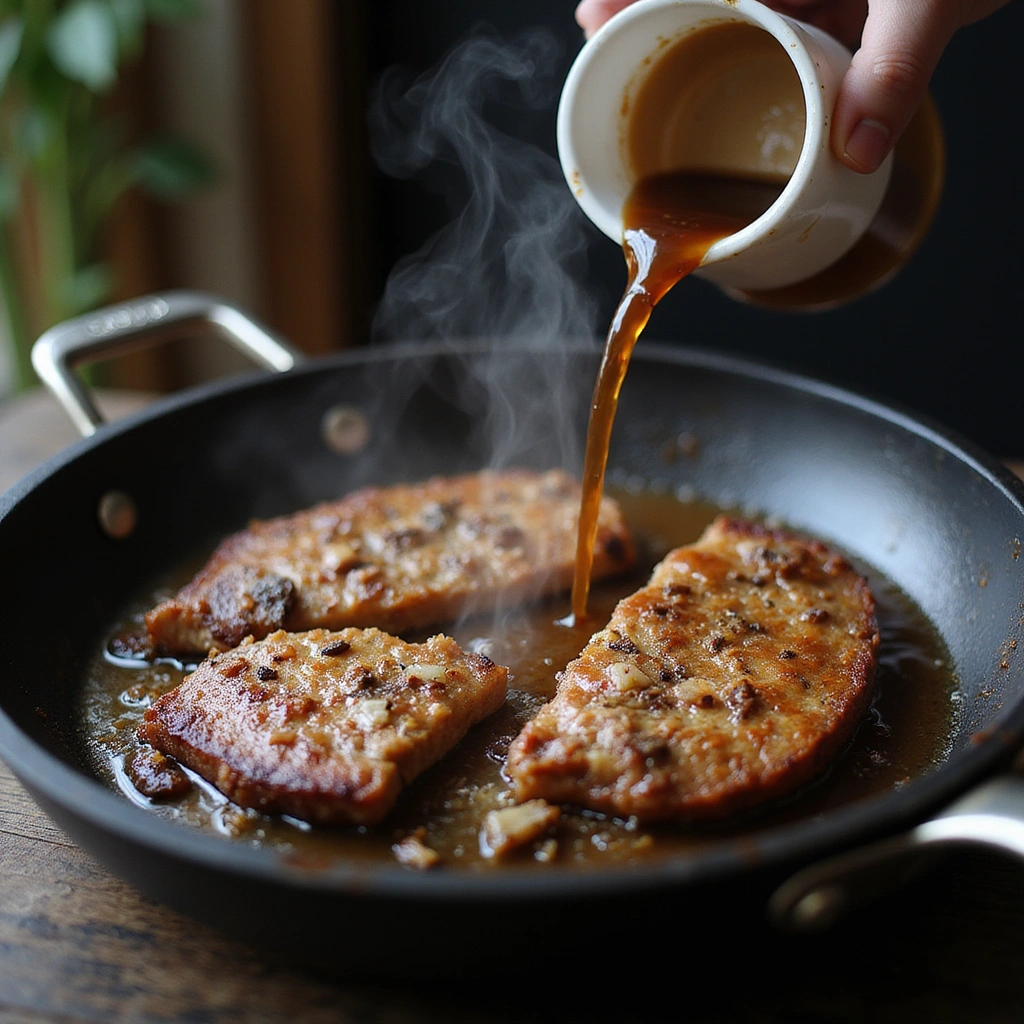
Lower the heat and pour in the brewed coffee to deglaze the skillet.
Use a wooden spoon to scrape up the browned bits from the bottom of the pan.
This adds depth to the sauce, incorporating all the flavors.
Let the mixture simmer for a couple of minutes to concentrate the flavors.
Step 4: Layer Vegetables
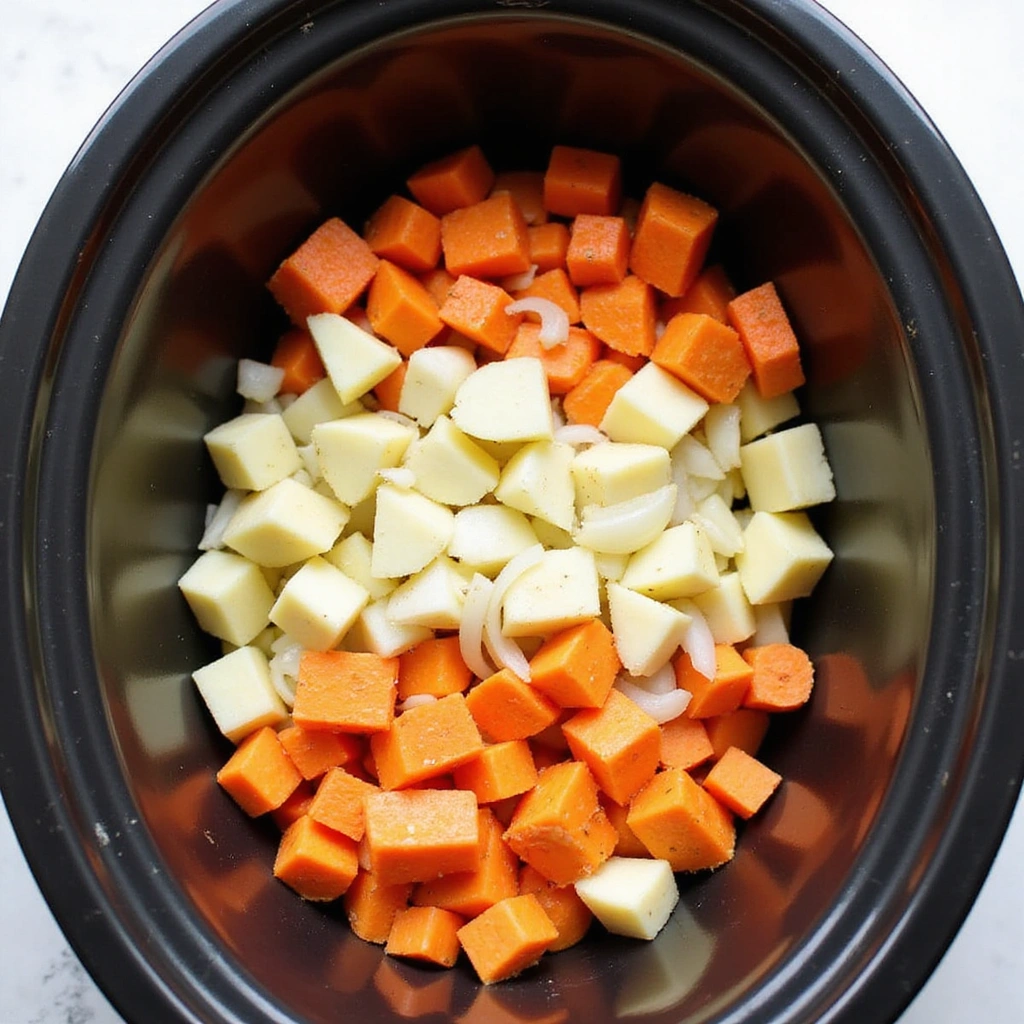
In the slow cooker, start by placing the carrots and potatoes at the bottom.
This ensures they cook evenly and absorb the flavors from the meat above.
Add the chopped onion on top of the vegetables for aromatic flavor.
Layering this way creates a delicious base for the roast.
Step 5: Add the Meat
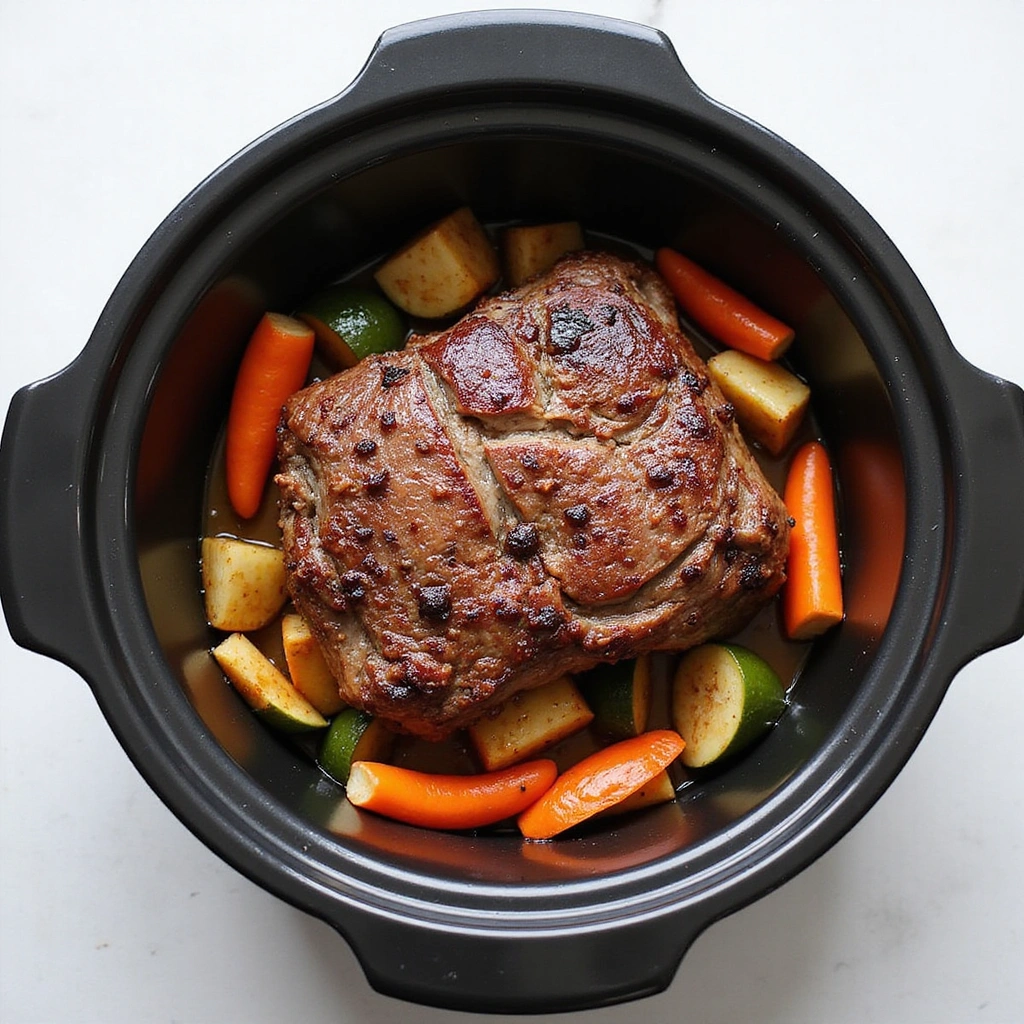
Carefully place the seared chuck roast on top of the layered vegetables.
Make sure it’s centered to allow for even cooking.
Pour the deglazed coffee mixture over the roast, ensuring it covers most of the meat.
This will help keep the roast moist and flavorful.
Step 6: Add Seasonings
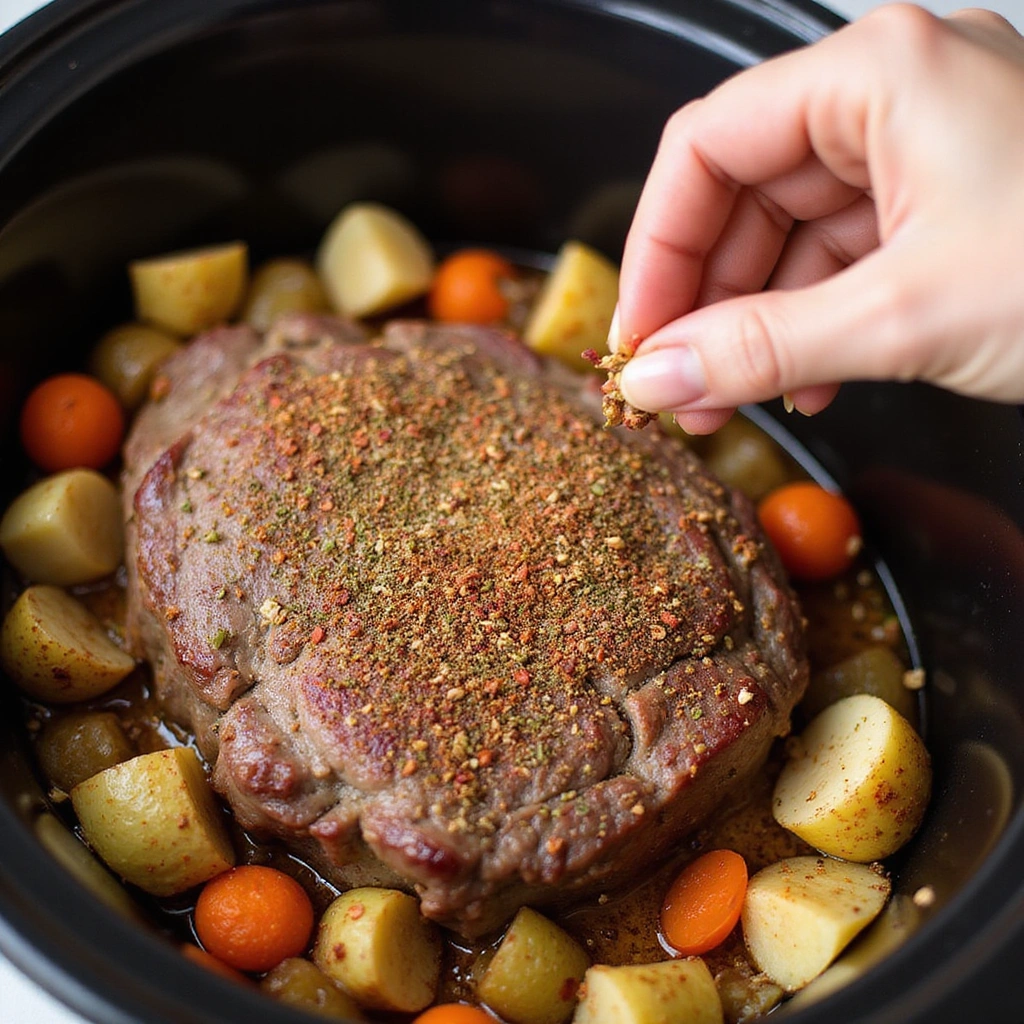
Sprinkle the garlic powder, salt, and black pepper over the roast and vegetables.
This will enhance the flavor profile as the dish cooks slowly.
You can adjust seasoning to taste later if desired.
Ensure even distribution of spices for consistent flavor.
Step 7: Cook on Low
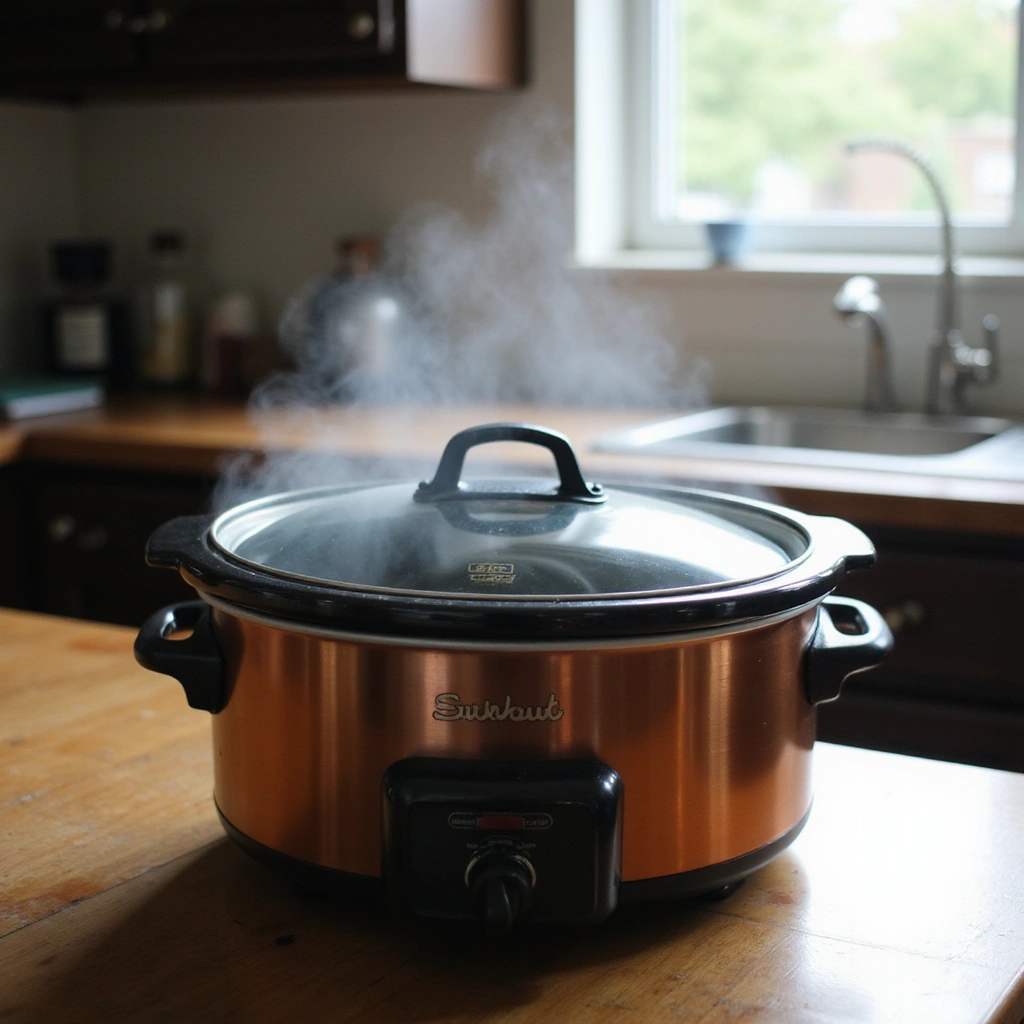
Cover the crock pot and set it to cook on low for 8 hours.
This long cooking time allows the flavors to meld and the meat to become tender.
Check the pot occasionally to ensure everything is cooking evenly.
Resist the urge to lift the lid too often to maintain heat.
Step 8: Check for Doneness
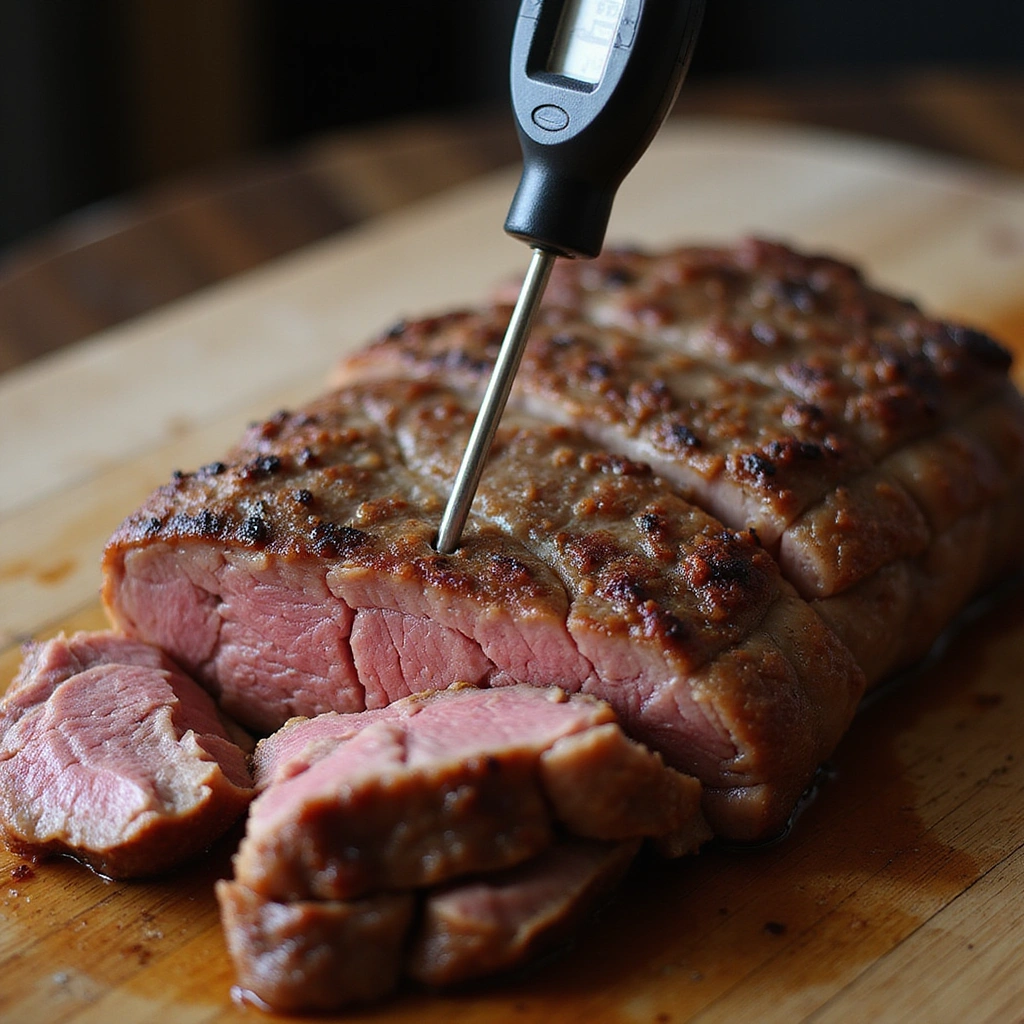
After 8 hours, carefully remove the lid and check the roast with a meat thermometer.
It should read at least 190°F for optimal tenderness.
If it’s not done, cover and cook for an additional hour, checking periodically.
The meat should be fork-tender and easily shred.
Step 9: Rest and Serve
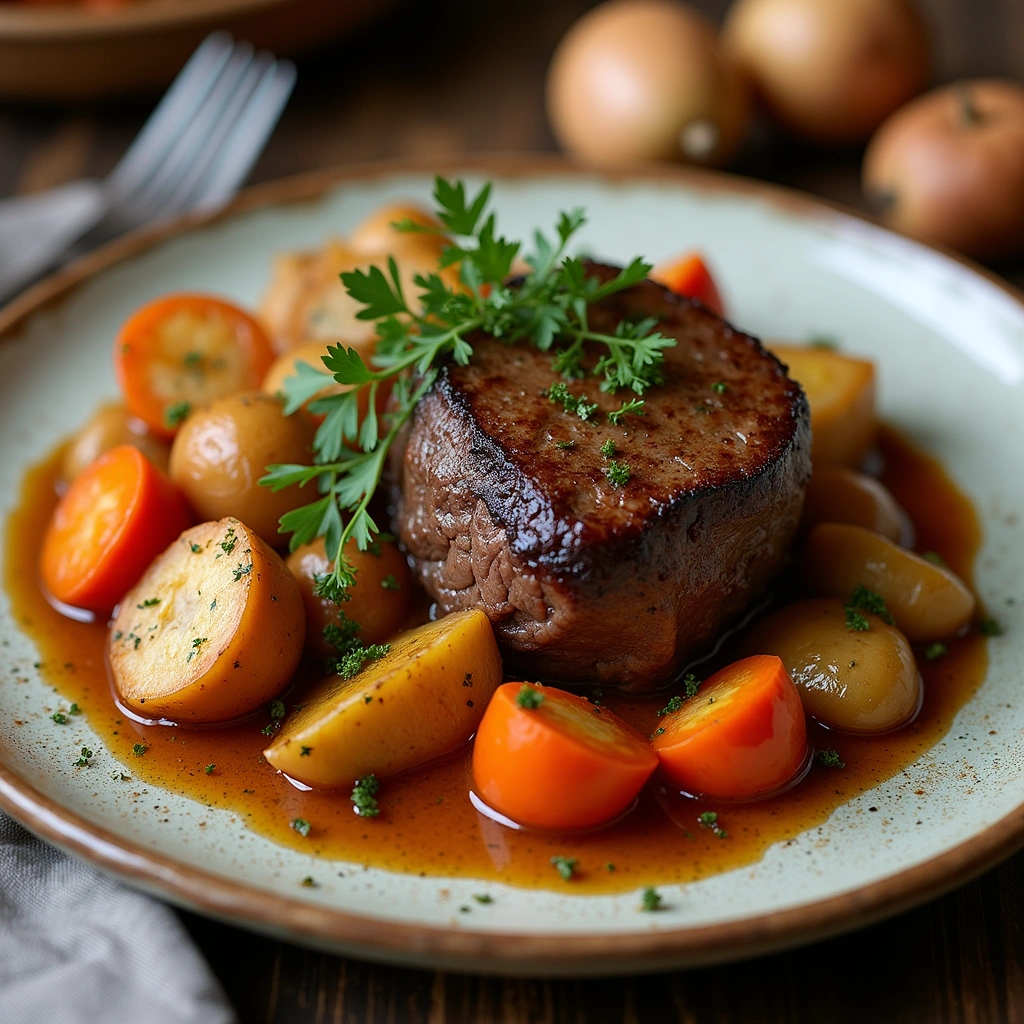
Once the roast is done, carefully remove it from the crock pot and let it rest for 10-15 minutes.
This allows the juices to redistribute for a more flavorful bite.
Slice or shred the meat according to your preference.
Serve with the vegetables and sauce spooned over the top.
Critical Timing and Temperature Guide
Cooking Time: Cook on low for 8 hours or until the internal temperature reaches 190°F. Look for fork-tender meat as a visual indicator of doneness. Avoid overcooking as it may dry out the meat.
Resting Time: Allow the roast to rest for 10-15 minutes after cooking. This helps retain juices and flavor. Cutting too early can result in a dry roast.
Serving Temperature: Serve the pot roast hot, ideally at a temperature above 140°F. Reheat leftovers gently to maintain moisture.
Pro Tips for Pot Roast Crock Pot Recipes With Coffee Rich And Flavorful
• Ingredient Selection: Choose high-quality chuck roast with good marbling for the best texture and flavor.
• Preparation Secret: Allow the meat to come to room temperature before searing, which helps achieve a better crust.
• Temperature Management: Keep the crock pot covered during cooking to maintain consistent heat, preventing drying out.
• Texture Enhancement: Use a combination of root vegetables, as they absorb flavors and add texture to the dish.
• Flavor Layering: Don’t skip the deglazing step; it builds essential flavors in the sauce.
• Make-Ahead Strategies: Prepare the ingredients the night before and store them in the fridge for a quick morning setup.
• Restaurant-Quality Finishing Touches: Garnish with fresh herbs like parsley or thyme before serving for added color and aroma.
• Equipment Optimization: Use a programmable crock pot for convenience and precise cooking times.
Troubleshooting Common Issues
• Texture Too Dry: This could be due to overcooking or insufficient liquid. Ensure to monitor cooking times closely and adjust liquid levels as needed.
• Flavors Unbalanced: If the dish tastes bland, consider adding more salt or a splash of vinegar to brighten flavors. Taste and adjust as you go.
• Meat Not Tender: If the meat isn’t tender after the recommended cooking time, it may need more time. Continue cooking until fork-tender.
• Too Watery Sauce: If the sauce is too thin, remove the lid for the last hour of cooking to let it reduce.
• Stuck to the Pot: If the roast sticks, ensure to deglaze the pan properly and avoid high heat while cooking.
Variations and Regional Differences
• Italian Style: In Italy, pot roast is often cooked with red wine, tomatoes, and herbs like rosemary, adding a Mediterranean flair.
• Mexican Variation: In Mexico, coffee is paired with spices like cumin and chili powder for a spicy twist.
• Southern Comfort: Southern versions may include a side of collard greens and cornbread for a comforting meal.
• Modern Interpretations: Contemporary cooks may incorporate plant-based ingredients or serve with quinoa instead of potatoes.
Food Science Behind the Recipe
• Maillard Reaction: This chemical reaction occurs when the meat is seared, creating complex flavors and a desirable brown crust. Understanding this helps you achieve better flavor development.
• Collagen Breakdown: Slow cooking allows collagen in tougher cuts of meat to break down, resulting in tender and juicy roast. This process takes time, so patience is key.
• Flavor Infusion: The long cooking time allows flavors to meld and intensify, leading to a rich, cohesive taste profile that is characteristic of a well-cooked pot roast.
Frequently Asked Questions
What’s the most common mistake people make when preparing Pot Roast? The most common mistake is not searing the meat before slow cooking, which can lead to a less flavorful dish. Always sear for optimal results.
Can I prepare components of this dish in advance? Yes, you can chop vegetables and even sear the meat a day ahead. Store them in the refrigerator until ready to use.
How do I adapt this recipe for dietary restrictions? For gluten-free options, use tamari instead of soy sauce. Ensure all broth is gluten-free as well.
What’s the best way to store and reheat leftovers? Store in an airtight container in the fridge for up to 3 days. Reheat in the microwave or on the stovetop over low heat to maintain moisture.
Can I freeze this dish? Yes, pot roast freezes well. Allow it to cool, then store in a freezer-safe container for up to 3 months. Thaw in the refrigerator before reheating.
What wine or beverages pair best with this dish? Full-bodied red wines like Cabernet Sauvignon complement the rich flavors of the roast beautifully.
How can I scale this recipe up for a crowd? Simply multiply the ingredients proportionally, but note that cooking times may vary slightly for larger quantities.
What side dishes complement this recipe best? Creamy mashed potatoes and roasted vegetables make excellent accompaniments to pot roast.
How do professional chefs elevate this dish for restaurant service? Chefs often add gourmet touches like truffle oil or serve with a sophisticated sauce reduction for enhanced presentation.
Serving and Presentation Guide
• Traditional Presentation: Serve the pot roast on a large platter surrounded by the vegetables, garnished with fresh herbs. This creates an inviting, family-style meal.
• Modern Plating Ideas: Present individual portions in shallow bowls, with a drizzle of sauce and a sprinkle of microgreens for a refined look.
• Accompaniment Suggestions: Pair with crusty bread or a side salad to balance the rich flavors of the roast.
• Special Occasion Presentation: For festive occasions, serve on a tiered serving platter with decorative garnishes like edible flowers or citrus slices.
Conclusion
I hope you feel inspired to try this Pot Roast Crock Pot Recipe with Coffee Rich and Flavorful.
It’s a comforting dish that brings friends and family together around the table.
Enjoy the delightful aromas and rich flavors that will surely become a favorite in your home.

